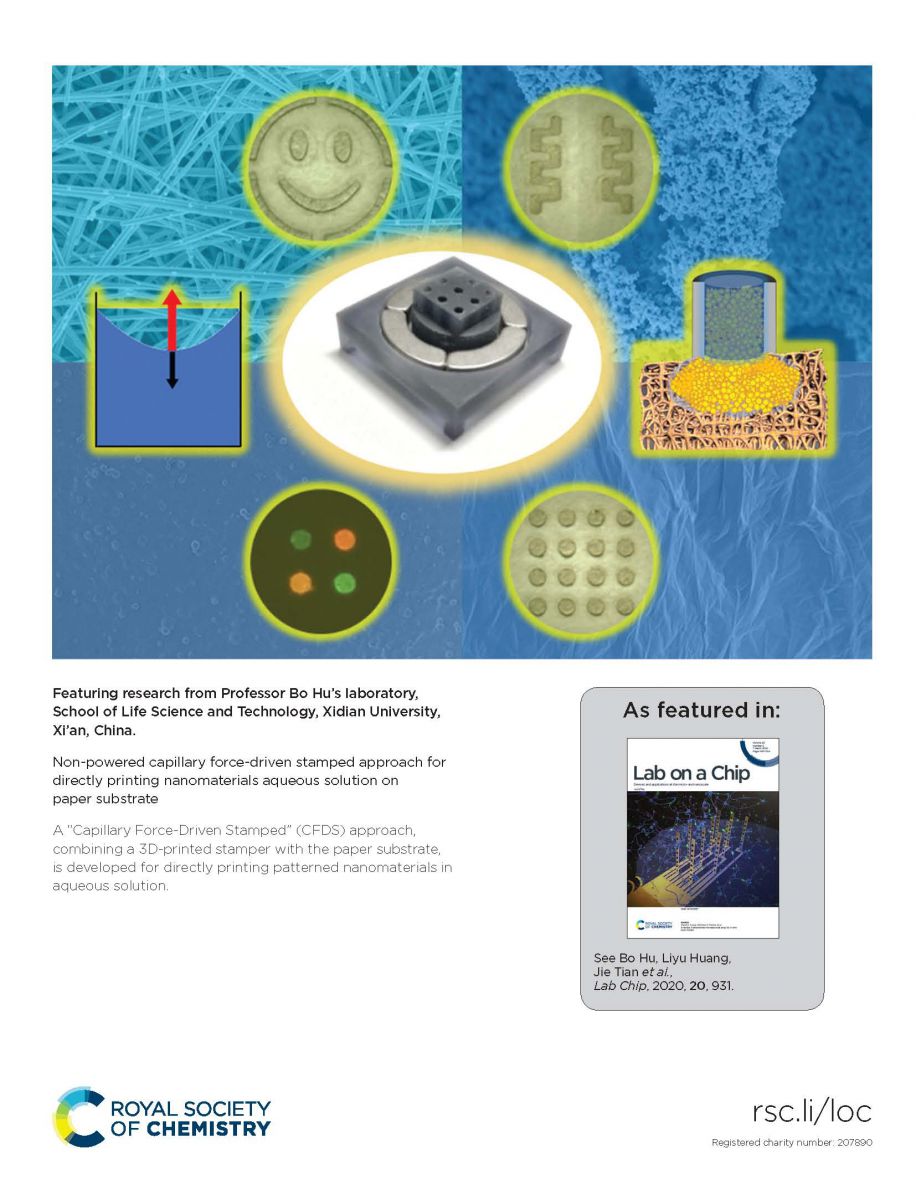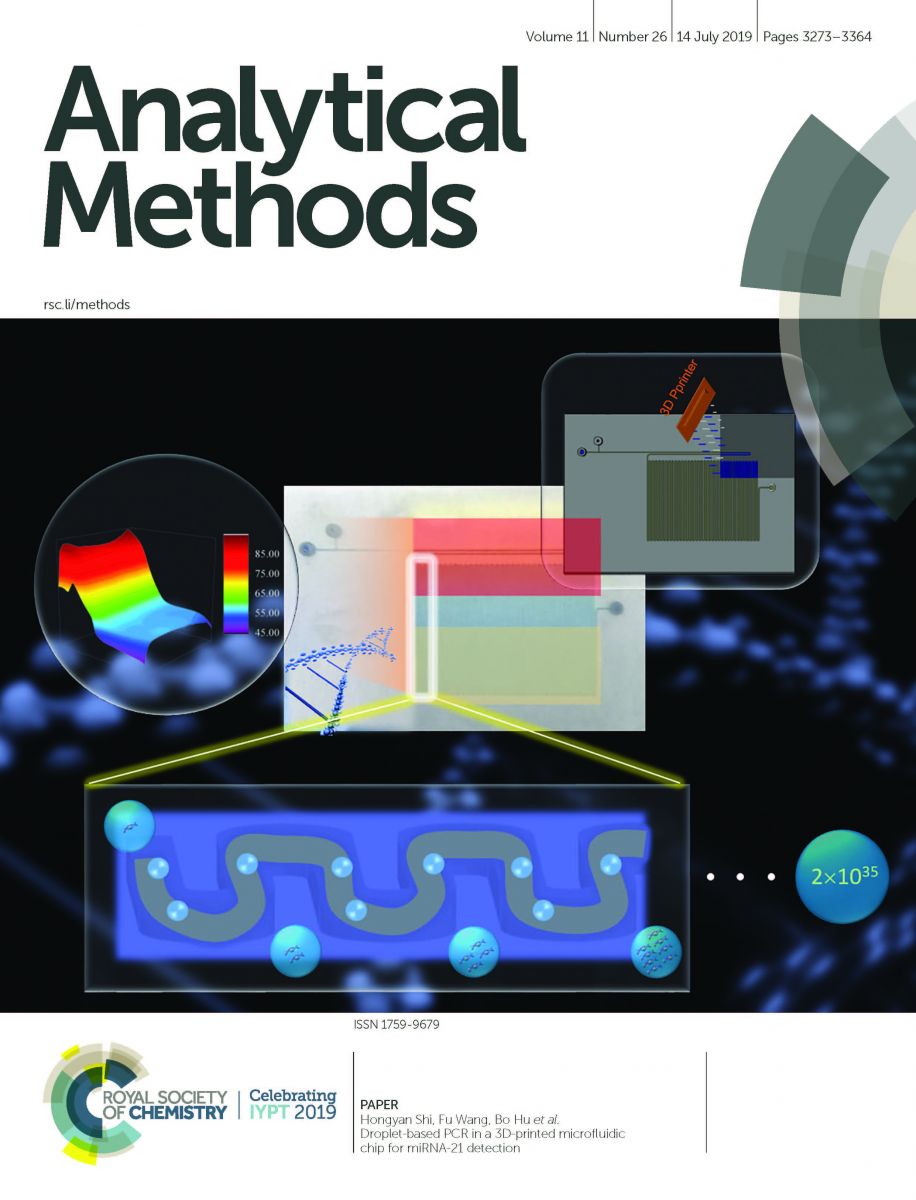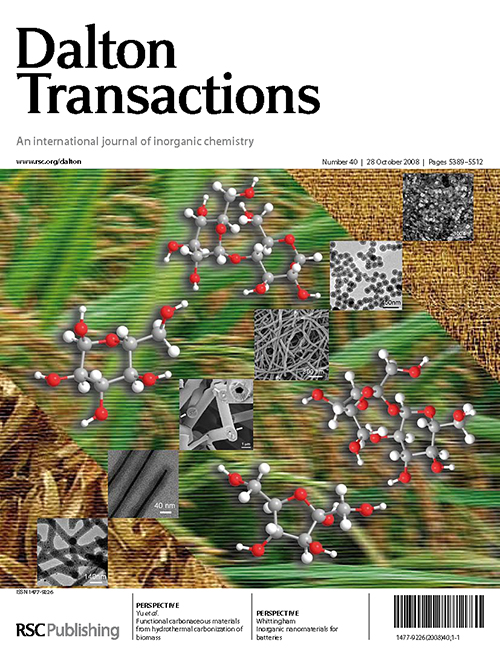
Guoqian Li, Jinkun Fan, Ting Zhang, Ting Gao, Yuying Chong, Minghui Liang, Shijian Liang, Bo Hu*, Langlang Yi*, Lei Zhao*, and Helene Castel* Honeycomb-Inspired Surface-Enhanced Raman Scattering Microarray for Large-Area Automated Testing of Urease in Saliva Samples, ACS Sensors, 2024, 9, 2031–2042.
Surface-enhanced Raman scattering (SERS) technology, as an important analytical tool, has been widely applied in the field of chemical and biomedical sensing. Automated testing is often combined with biochemical analysis technologies to shorten detection time and minimize human error. The present SERS substrates for sample detection are time-consuming and subject to high human error, which is not conducive to the combination of SERS and automated testing. Here, a novel honeycomb-inspired SERS microarray is designed for large-area automated testing of urease in saliva samples to shorten detection time and minimize human error. The honeycomb-inspired SERS microarray is decorated with hexagonal microwells and a homogeneous distribution of silver nanostars. Compared with the other four common SERS substrates, the optimal honeycomb-inspired SERS microarray exhibits the best SERS performance. The RSD of 100 SERS spectra continuously collected from saliva samples is 6.56%, and the time of one detection is reduced from 5 min to 10 s. There is a noteworthy linear relationship with a R2 of 0.982 between SERS intensity and urease concentration, indicating the quantitative detection capability of the urease activity in saliva samples. The honeycomb-inspired SERS microarray, combined with the automated testing, provides a new way in which SERS technology can be widely used in biomedical applications.

Inside Back Cover
Langlang Yi,# Lei Zhao,# Qilu Xue, He Cheng, Hongyan Shi, Jinkun Fan, Shixuan Cai, Guoqian Li, Bo Hu,* Liyu Huang* and Jie Tian* Non-Powered Capillary Force-Driven Stamped Approach for Directly Printing Nanomaterials Aqueous Solution on Paper Substrate, Lab on a chip,2020, 20,931-941.
The recent boom of nanomaterials printing in the fields of biomedical engineering, bioanalysis and flexible electronics has greatly stimulated researchers\\\\\\\\' interest in printing technologies. However, specifically formulated nanomaterial inks have limited the types of printable nanomaterials. Here, a unique non-powered capillary force-driven stamped (CFDS) approach, combining a 3D-printed stamper with a paper substrate, is developed for directly printing patterned nanomaterials aqueous solution. The CFDS approach has two processes, including the loading process in which the capillary force of the stamper channel is stronger than gravity, and the deposition process, in which the synergistic action of the capillary force of the paper fibre tubes and gravity is approximately 20 times the capillary force of the stamper channel. Four additive-free nanomaterial aqueous solutions, including nanowires, nanosheets, nanostars and nanogels, are used to print patterns, and show slight diffusion and desired uniformity with a diffusion rate and roundness of 1.12 and 0.78, respectively, demonstrating the feasibility of this approach. Four kinds of nanogel with different fluorescence labels are simultaneously printed to challenge the approach and demonstrate its flexibility and scalability. The resolution of the approach is 0.3 mm. Without any post-processing, the stamped paper substrates directly serve as paper-based surface enhanced Raman scattering substrates with an enhancement factor of 4 × 106and as electrodes with a resistance of 0.74 Ω, demonstrating their multi-functionality. Due to its general, flexible and scalable applicability, this simple, low-cost and non-powered approach could be widely applied to the personalized printing of nanomaterials on paper substrates.

Supplementary journal cover
Fenxiang Hong,# Chu Tang,# Qilu Xue, Lei Zhao, Hongyan Shi,* Bo Hu,* Xianghan Zhang* Simultaneously Enhanced Singlet Oxygen and Fluorescence Production of Nanoplatform by Surface Plasmon Resonance Coupling for Biomedical Applications, Langmuir,2019, 35, 46, 14833-14839.
Photodynamic therapy (PDT) and fluorescence imaging offer the possibility of precise and personalized treatment of cancer, but low singlet oxygen production of a commercial photosensitizer and the quenching effect of fluorescent dyes limit the further application of PDT treatment and fluorescence imaging. In addition, the single nanoplatform that simultaneously achieved singlet oxygen and fluorescence enhancement is rare. In this paper, a novel simultaneously enhanced singlet oxygen and fluorescence production nanoplatform of AuNR@mSiO2–Ce6–Cy5.5 has been successfully designed and synthesized by surface plasmon resonance coupling. The as-synthesized nanoplatform achieved a 1.8-fold enhancement of the singlet oxygen production of Ce6 and a 5.0-fold enhancement of the fluorescence production of Cy5.5 by surface plasmon resonance coupling. The as-synthesized nanoplatform simultaneously enhances the photodynamic therapy and fluorescence imaging of cancer, which will have great potential in biomedical applications.
Outside front cover
Zhiqiang Jiao#, Lei Zhao#, Chu Tang, Hongyan Shi, * Fu Wang,* Bo Hu,* Droplet-based PCR in a 3D-printed microfluidic chip for miRNA-21 detection, Analytical Methods, 2019, 11, 3286–3293.
3D-printed microfluidic chip was designed and fabricated for droplet-based PCR detection of miRNA-21. In this chip, the capacity of monodisperse droplet generation was demonstrated. Moreover, the temperature of the chip was uniform and sufficiently stable, meeting the requirement for the PCR process. In addition, the working conditions of the droplet-based PCR process in the 3D-printed chip were explored. Finally, the droplet-based PCR detection of miRNA-21 levels in the MCF-10A cells and MDA-MB-231 cells was successfully achieved using the 3D-printed chip. We expect that the enormous potential of 3D printing technology in the research area of microfluidics will be explored in the future.
Inside front cover
Hongyan Shi#, Bo Hu#, XiaoChun Yu, RongLi Zhao, XiFeng Ren, ShiLin Liu, JianWei Liu, Mei Feng, AnWu Xu,Shu-Hong Yu*, Ordering of Disordered nanowires: Spontaneous Formation of Highly Aligned, Ultralong Ag Nanowire Films at Oil-Water-Air Interface, Advanced Functional Materials, 2010, 20, 958-964(# contribute equally).
Highly aligned, ultralong Ag nanowire films can spontaneously form at the three-phase interface of oil-water-air. The ordered films exhibit intrinsic large electromagnetic (EM) fields that are localized in the interstitials between adjacent nanowires. This new three-phase interface approach has been found to be a general route, and can be extended to self-assemble other ultralong nanowires to produce ordered films.
Most Accessed article:http://www3.interscience.wiley.com/journal/77003362/home/2126_mostaccessed_all.html
Outside front cover
Bo Hu, Kan Wang, Lei Liu, Shu-Hong Yu*, Functional Carbonaceous Materials from Hydrothermal Carbonization of Biomass: An Effective Chemical Process, Dalton Transactions, 2008, 5414 - 5423.
https://pubs.rsc.org/en/content/articlelanding/2008/dt/b804644c#!divAbstract
RSC Dalton Transactions highlights nanomaterials for energy solutions
Nanotubes from biomass: Hydrothermal Carbonization
http://www.rsc.org/Publishing/Journals/dt/DTNewsArchive.asp
http://www.rsc.org/Publishing/Journals/dt/News/b804644cpersp.asp






